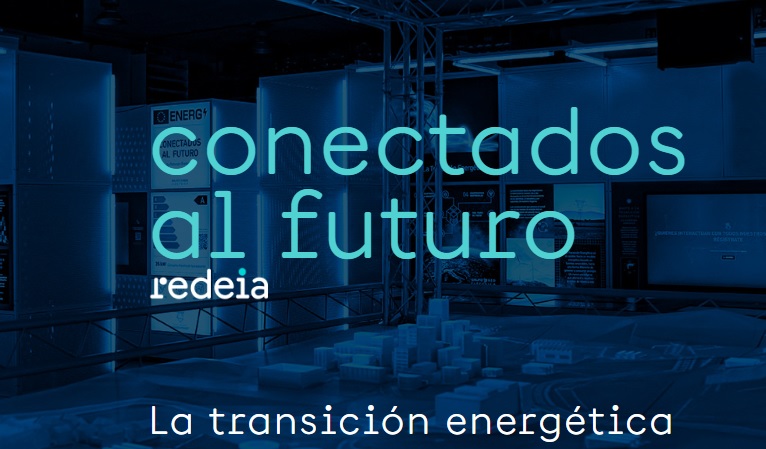We are a global operator of essential infrastructure
- The Group is collaborating in an innovative project in the north-east of Segovia in which the residents themselves are the owners of the infrastructure that provides their homes and businesses with a 1,000 Mbps connection.
- The initiative was created as a tool to encourage the repopulation and economic reactivation of rural Spain, where 50.2% of the population lacks internet speeds of more than 100 Mbps and 13.4% does not even exceed 30 Mbps.
- Red Eléctrica Group’s target for 2030 is to guarantee 100% connectivity for those living in the vicinity of its facilities.
The Red Eléctrica Group has made the fibre optic network of the electricity transmission grid available to a community pilot project that provides access to ultra-high speed internet (1,000 Mbps) to municipalities with a very small population, which makes them commercially unattractive to large telecommunications operators. This collaboration by Red Eléctrica is part of its commitment to the so-called "Empty Spain", where it carries out social innovation initiatives to promote its reactivation and repopulation.
Days before the World Telecommunications and Information Society Day is celebrated on Monday 17, it is necessary to remember that 13.4% of rural areas in Spain still do not have Internet access of at least 30 Mbps speed and 50.2% lack coverage of ultra-fast networks –more than 100 Mbps–, according to the broadband coverage report of the Ministry of Economic Affairs and Digital Transformation 2019.
"The digital divide is an inequality factor and contributes to the depopulation of our villages. Connectivity is essential not only for a person to decide to stay, return or start their life project in a town with the same digital rights as if they lived in the city, but also for them to have access to all public services: from carrying out administrative procedures telematically without having to travel to the capital, to studying remotely, something that has been almost impossible for many children during the pandemic, affecting their educational development," pointed out Antonio Calvo Roy, Sustainability Director of the Red Eléctrica Group.
The initiative, promoted by the non-profit association Nordesnet, is being developed in three municipalities with less than 180 inhabitants in the Northeast of Segovia: Castroserracín, Navares de las Cuevas and Cerezo de Abajo. The aim is to extend it to more than 50 municipalities in the region, where the population density is less than six inhabitants per square kilometre, half of what the European Union establishes for an area to be considered a “demographic desert” –12 inhabitants per square kilometre.
Nordesnet has been set up as a telecommunications operator and has created an ultra-fast connection network that uses the dark optical fibre contained in the cables of a nearby Red Eléctrica line, which facilitates access and connection. The Guifi.net Foundation, the architect of a free, open and neutral telecommunications network in Catalonia, is responsible for activating the fibre.
An initiative promoted and managed by the inhabitants of the villages
Nordesnet responds to a need of the population of the area and is managed as a "digital farm", meaning that the inhabitants themselves, together with companies and administrations that wish to do so, invest and participate in the deployment of the network in their town. Those who do not wish to invest can sign up for the services as they would do with any other internet provider.
"Just as in other times the locals helped to bring water or electricity to their homes, now we are collaborating to bring a resource that is essential for the survival of the region as it attracts and retains inhabitants, talent and investment beyond the primary sector", says Emilio Utrilla, a computer engineer who decided to promote the project after moving to Castroserracín and realising that the lack of an adequate connection prevented him from properly serving many of his clients.
Calvo Roy added: "We have to banish the idea that small municipalities, towns and villages can only be dedicated to the primary sector, to agricultural activity. It is an important sector and it can be greatly improved by applying digitisation, connectivity and new technologies, for example, for better pest control or more efficient water management. However, we must take the leap and broaden the horizon of life and the contribution of the rural environment to all areas in which personal and professional life can be developed".
"The COVID-19 crisis has highlighted the digital divide between rural and urban areas. We cannot talk about accelerating the digital transformation when there are people who do not even have access to the internet at present," says Ramón Roca, co-founder of Guifi.net.
In Cerezo de Abajo, the town council itself has joined the initiative and is deploying the network to facilitate access to all residents, with the goalof using the network for other needs, such as water management, in the near future. "We consider that all our neighbours should have the possibility to connect to a quality broadband", says Concepción Garcia Asenjo, mayoress of the municipality, and adds: "we also want Cerezo de Abajo to be prepared to develop applications that make us more sustainable, such as lighting or water supply management and to be able to offer our neighbours important services such as telemedicine, which will be available in our doctor’s surgery".
Nordesnet contributes to the achievement of Sustainable Development Goals 8, 10 and 17; and is one of the various social innovation projects that the Red Eléctrica Group is carrying out in rural Spain with the aim of leaving a positive social impact in the territories in which it operates.
They are thus aligned with the strategic framework of the Company and its Commitment to Sustainability 2030. All of them are developed hand in hand with important leaders in social innovation based in the territories, essential collaborators with the necessary knowledge and experience to carry out the initiatives.














